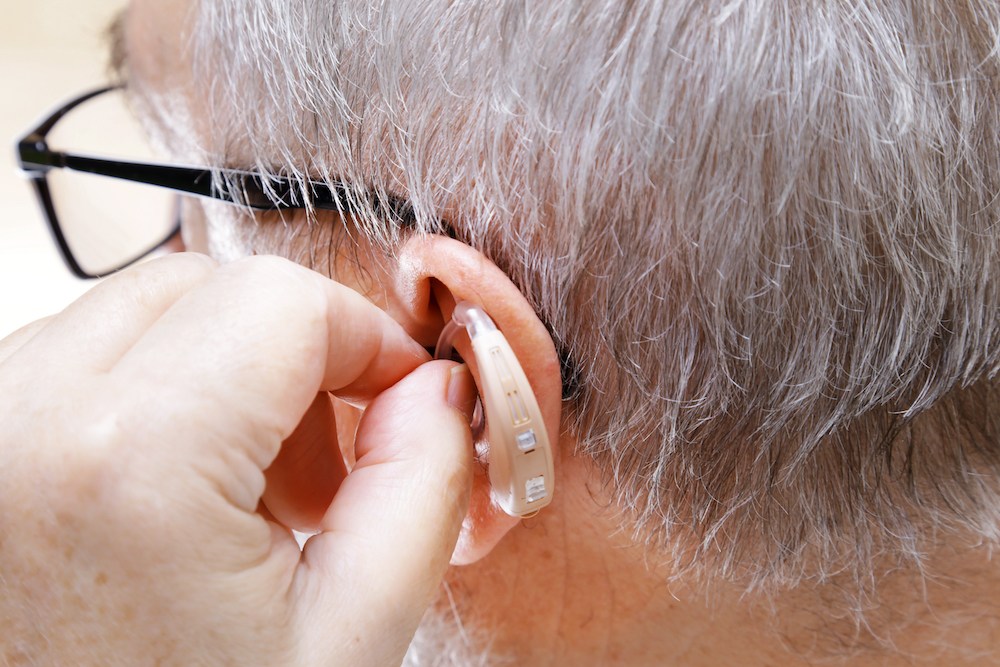How to Choose the Best Hearing Aid for Your Lifestyle
Choosing the right hearing aid isn’t just about finding something

By: admin | October 20, 2025
Choosing the right hearing aid isn’t just about finding something that makes sounds louder. It’s about matching the device to how you actually live your life. If you spend a lot of time in restaurants, attend meetings regularly or enjoy group activities, you’ll benefit from features that help you hear clearly in noisy environments. On the other hand, if your daily routine is quieter and more predictable, you might not need all those advanced options. The key is thinking through where you struggle most with your hearing and what improvements would make the biggest difference.
Your lifestyle also influences practical considerations like the style of hearing aid that works best for you. Some people prefer discreet devices that sit inside the ear, while others find behind-the-ear models more comfortable and easier to handle. If you’re active and spend time outdoors, durability and moisture resistance become important. If you use your smartphone frequently, you might want hearing aids that connect wirelessly for calls and music. Working with an audiologist helps you sort through these choices and find a device that fits both your hearing needs and your day-to-day routine.
Hearing aids come in a variety of shapes and sizes, each with its own set of features to suit different needs. Some fit completely inside the ear, making them less noticeable, while others rest behind the ear for added power and flexibility. Modern devices do more than just make sounds louder. Many are designed to reduce background noise, enhance speech clarity and connect to smartphones, TVs or other audio devices via Bluetooth.
Battery life and power options are also important to consider. Some hearing aids use small disposable batteries that require regular replacement, while others have rechargeable batteries that can last a full day on a single charge. Additional features, like water resistance, telecoil support or app integration, can also improve convenience and overall usability. The right hearing aid for you depends on your lifestyle, the environments you spend time in and what feels most comfortable and easy to use, helping you get the most from your daily listening experience.
Hearing loss can affect more than just the ability to catch words in conversation. Daily activities like talking with friends, watching TV or listening to announcements in public spaces may require more concentration than before. Even routine sounds, like the doorbell, phone alerts or the microwave timer, can be harder to notice, making simple tasks feel more demanding. Over time, these challenges can create fatigue and make it harder to stay fully engaged in everyday life.
Understanding how hearing loss impacts your routine starts with looking at the environments you spend time in. Consider whether your days are mostly at home, in the office or in social settings like restaurants, meetings or group activities. Different hearing aids are designed with features that handle background noise, improve speech clarity or enhance certain frequencies. Picking a device that aligns with the places and situations you frequent can make daily listening feel more natural and less tiring.
Thinking through your lifestyle and hearing needs can also help you anticipate where adjustments may be necessary. If certain sounds are consistently hard to hear or if you find yourself straining in specific situations, these are signals to consider features that support those challenges. Matching your hearing aid to your routine allows you to participate more fully in conversations, stay aware of your surroundings and handle daily activities with greater ease, making hearing loss easier to manage in practical, meaningful ways.
Choosing the right hearing aid style is an important part of finding a device that fits your lifestyle and meets your hearing needs. Different styles offer a mix of visibility, comfort and functionality and understanding the options can help you make a choice that works best for you.
Each style has trade-offs in visibility, ease of use and performance in different listening environments. Choosing the right one depends on your personal preferences, daily activities and the hearing situations you encounter most often.
A hearing evaluation provides valuable details about your hearing needs before you select a device. Your audiologist uses specialized tests to measure how well you hear different sounds and tones. This information helps match you with the right device for your level of hearing loss.
Without a hearing evaluation, it is difficult to know which features or styles will work best for you. Some people may need more powerful devices, while others do better with smaller, less noticeable options. The evaluation also checks for any factors that could affect how well a hearing aid works for you, ensuring a comfortable fit and the best possible results in your daily life.
Certain features can make a big difference in how well a hearing aid works for you. Noise reduction, feedback control and Bluetooth connectivity can help you hear more clearly in many situations.
Noise reduction helps cut down on background sounds, making it easier to focus on conversations in busy places. Feedback control prevents the whistling sound that sometimes occurs with hearing aids, so you can wear your device comfortably throughout the day. Bluetooth allows you to connect your hearing aid to phones, TVs or other devices, making it easier to enjoy calls or listen to music. These features help you feel more confident and comfortable as you go about your daily activities.
The environments where you spend your time influence which hearing aid will work best for you. If you are often in quiet settings like your home, you may not need as many advanced features as someone who spends time in busy or noisy environments.
People who attend group events, go to restaurants or spend time outdoors might benefit from hearing aids with strong noise reduction and directional microphones. These features help make speech clearer and reduce background sounds, making it easier to follow conversations in busy places.
Selecting a hearing aid that fits your work and social needs can help you feel more at ease in different situations. The right device can make it easier to participate in meetings, talk with coworkers or enjoy time with friends and family. Your daily routine is important when choosing features that will help you hear clearly.
Think about whether you work in a busy office or a quiet space, if you are often in group conversations or one-on-one talks, and whether you need to hear well over the phone or during video calls. Each of these factors can guide which hearing aid features will support your work life and social activities best.
Modern technology has transformed how hearing aids work and what they can do for you. Today’s devices use digital processing to make speech clearer and reduce unwanted background noise, making it easier to follow conversations even in busy places.
Many hearing aids now connect wirelessly to smartphones, tablets and TVs using Bluetooth. This allows you to stream phone calls, music or other audio directly into your hearing aids without extra wires or devices. These features make daily activities like talking on the phone or watching TV much simpler.
Newer devices also use smart features that adjust settings automatically based on your environment. For example, if you move from a quiet room to a noisy street, the device can change its settings to help you hear better without needing to press any buttons. These improvements help you enjoy clear sound in many different situations throughout your day.
The type of battery your hearing aid uses can affect your daily routine. Some devices use small disposable batteries, while others have rechargeable batteries that you can plug in at night.
Disposable batteries usually need to be changed every few days to a week, depending on how much you use your device. Rechargeable batteries can be more convenient for people who do not want to handle tiny battery doors or keep extra batteries on hand. To keep your hearing aid working well, store it in a dry place, clean it regularly with a soft cloth and avoid exposing it to water or extreme heat.
Many hearing aids today are designed to work well with phones and other electronic devices. Bluetooth features allow you to connect your hearing aids directly to smartphones, tablets or TVs. This makes it easier to hear phone calls, music or video sound without extra equipment.
Some devices also have special settings that help reduce feedback or echo when talking on the phone. If you use a smartphone, certain apps let you control the volume or change programs right from your device. These options give you more control over your listening experience and help you stay connected with friends and family.
Using hearing aids with electronics can make daily life more convenient. Many people find it easier to keep up with conversations and entertainment when their devices work together smoothly.
After selecting your hearing aid, the next step is fitting and programming by your audiologist. This appointment ensures the device matches your hearing needs and feels comfortable in your ear.
You will learn how to put on, remove and care for your new hearing aid. The audiologist will also show you how to adjust the volume or switch between programs if your device has these features.
Adjusting to a new hearing aid can take some time. At first, sounds may seem different or even a bit overwhelming, but your brain will gradually adapt. Regular follow-up visits help fine-tune the settings so you can hear as clearly as possible in your daily life.
Finding the right hearing aid is about more than just making sounds louder. It’s about making everyday life easier by supporting the situations where hearing is most important. Selecting a device that fits your daily routine, social interactions and listening environments helps you follow conversations, stay involved in group activities and feel more comfortable in settings that used to be challenging. Thinking through your lifestyle first makes it easier to identify the features and style that will have the biggest impact.
At Baker Audiology & Hearing Aids in Sioux Falls, SD, you can work with an audiologist to explore which hearing aids fit your needs and your day-to-day life. From settings and styles to connectivity options, the right guidance ensures your device helps you hear clearly in the moments that matter most. Call (605) 610-3466 to schedule a consultation and take the next step toward better hearing.
Tags: hearing aid basics, hearing aid selection tips, hearing aid styles

Choosing the right hearing aid isn’t just about finding something
By: admin | October 20, 2025

Hearing aids have quietly become some of the most advanced pieces of
By: admin | July 29, 2025

If you enjoy hiking, playing tennis, working in your garden or
By: admin | June 20, 2025
